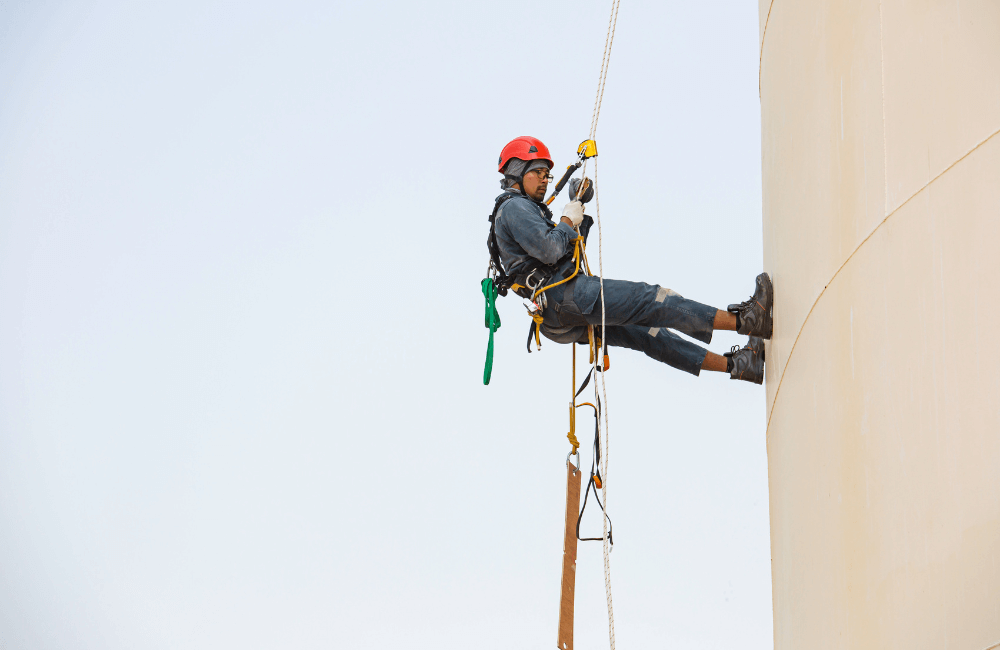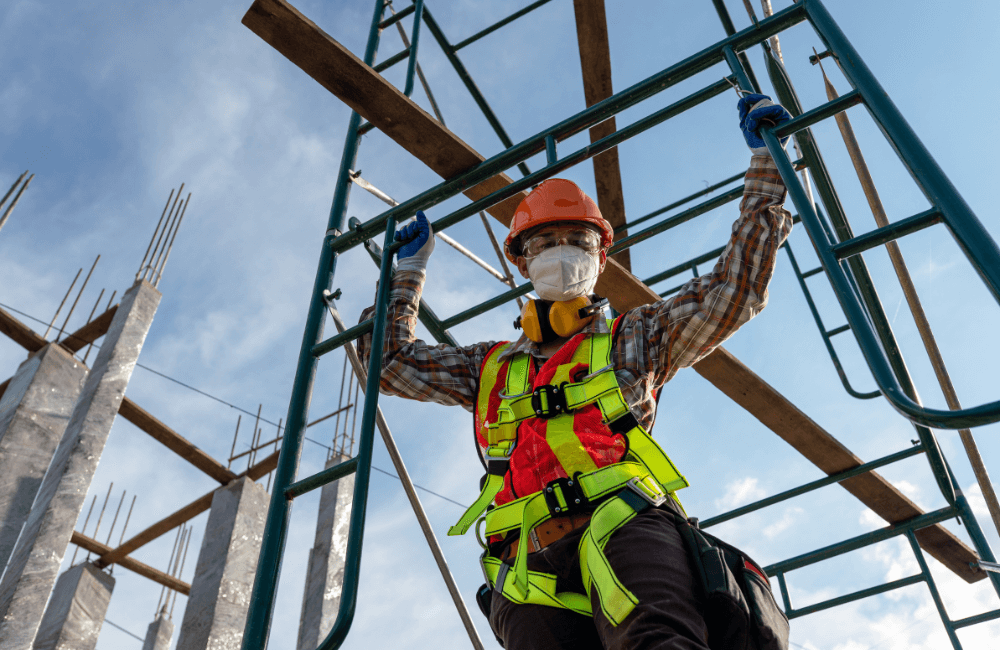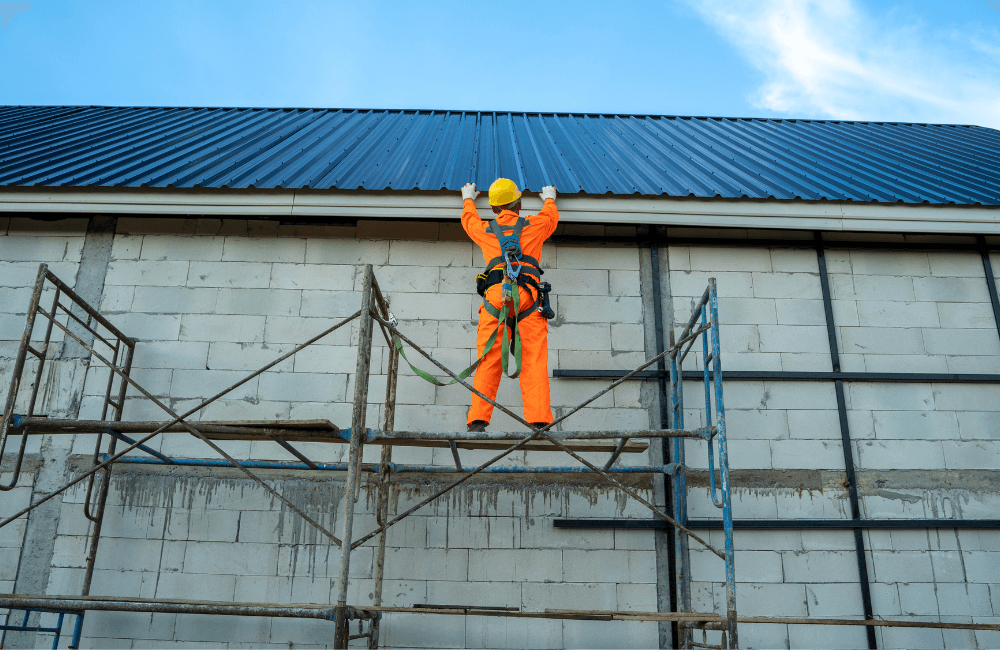Get A Free Quote
1300 007 782
Call Us On:
1300 007 782G10/RMS Accredited
Competitive Rates
ZERO Accidents or Injuries
25+ years combined experience
50+ years combined experience
Competitive Rates
G10/RMS Accredited
ISO Certified

From scaffolding to window cleaning and roofing to construction, many industries require working at heights. Any work that involves heights includes the risk of falls and even falls from “shorter” distances can be fatal. When working at height, safety should always be your first priority.
In Australia, falls from heights are one of the leading causes of injury in the construction sector. Strong safety guidelines and control measures are your best defence against them.
A person conducting a business or operation (PCBU) has a primary duty of care to make sure workers and others aren’t exposed to risks to their health and safety, while everyone has a responsibility to reduce the risks on a worksite.
If you need help familiarising yourself with the working from heights guidelines in NSW or putting together a safety plan for your worksite, SSTC can help. Here’s our guide to how to minimise risks and maximise safety when working at height.
Working at heights is a leading cause of injury and death in Australia. The most common hazards of working from heights include:
The construction industry is the worst offender when it comes to falls, with sectors like mining, manufacturing and transportation also ranking among the most dangerous. Even a fall from just two to four metres can lead to loss of life.
Uneven, slippery, and other unstable surfaces increase the risk of slips and falls from heights. This can be caused by a range of factors, including weather conditions and structural deficiencies.
When working at heights, edge protection is crucial on roofs, platforms, around holes and anywhere else where workers are at risk of a fall. Control measures like guardrails, fall arrest systems and safety nets can help to prevent worst-case scenarios from occurring.
It’s not just slipping off the side or into holes that’s a problem. Workers can accidentally drop tools and materials from roofs and platforms, and materials can become dislodged. Safety measures include personal protective equipment (PPE) like hard hats and tool lanyards, as well as screens and netting.
The dangers of working at heights increase during wet or windy weather conditions. Sudden storms and other unexpected weather events can cause workers to lose balance, make scaffolding slippery or knock materials from high surfaces. PPE can help, but sometimes, the best option is to postpone work until weather conditions improve.
Lack of training, improper equipment use or lack of personal protective equipment
Comprehensive staff training means workers are less likely to misuse the equipment or ignore safety protocols. Other important measures include regular supervision, enforcement of safe work practices, and the provision of equipment in good working order, which is repaired and replaced when necessary.

As a PCBU, you have working at heights guidelines to follow when it comes to running your worksite. You have to eliminate the risks of working at heights as much as possible. If that’s not possible, you have to minimise risks as far as reasonably practicable by identifying hazards and assessing how to control the risks.
You also need to liaise with workers, health and safety representatives and anyone else likely to be at risk.
Any construction work that involves the risk of falling more than two metres is classified as high-risk construction work. You need to prepare a safe work method statement (SWMS) before any work of this kind commences.
PCBUs need to make sure work is performed on the ground or on a solid, stable surface as much as possible. If work needs to be performed at height, PCBUs need to minimise risks by:
There are multiple factors that contribute to falls and other accidents on worksites. Here are some common mistakes to avoid when you’re aiming to protect the safety of your workers:
The pressure to get a job done on time and then move on to the next one can sometimes cause PCBUs and workers to skimp on safety. It’s important to dedicate time, resources, and money to safety measures, training, and protocols, as well as to take regular breaks when necessary.
Personal protective equipment like safety harnesses, helmets, boots, etc., helps prevent the risk of trips and falls and protects the long-term health of your workers. Up to 15% of all serious workplace injuries are caused by workers not wearing adequate PPE.
Anyone can make a mistake, no matter how trained or competent, and a split second is all it takes. Overconfidence and complacency increase the risk of accidents. Stay focused, and make sure you continue to observe proper safety measures.
Tasking workers with duties beyond their capabilities creates a potentially very dangerous situation. Workers need to be well-versed in both the theoretical and practical aspects of working at heights, including risk assessment, ladder-securing techniques and methods of moving equipment.
When it comes to safety equipment, not all wear and tear is immediately obvious. Visually inspect equipment before wearing it, and don’t forget to perform regular detailed safety checks.
Some measures to consider to ensure safety when working at height include:

SSTC offers safety standards you can count on and is trusted by some of Australia’s largest construction companies. With over 25 years of combined experience, we’re experts in risk assessment, construction site safety and all kinds of plans and permits. When you do things the SSTC way, you work with the highest standards of safety. SSTC can help you guarantee the safety of your worksite when it involves working at heights and put together a safe work method statement for you too.
SSTC provides a vast range of industrial services tailored to meet the needs, requirements and documentation of every work site. Our security consultants create and develop site-specific safe work method statements and risk assessments and help our clients acquire the right permits for working in confined spaces. If something still goes wrong even after a risk assessment, we also have emergency and first response teams to pull your workers out of tough situations.
To find out more about how we can help improve your safety measures when working at height, contact the SSTC team for a free quote.